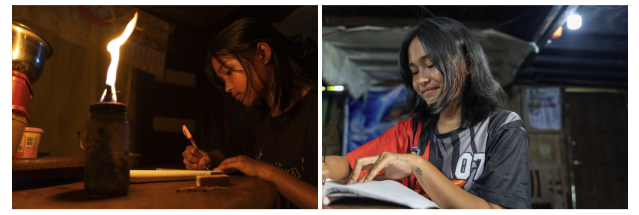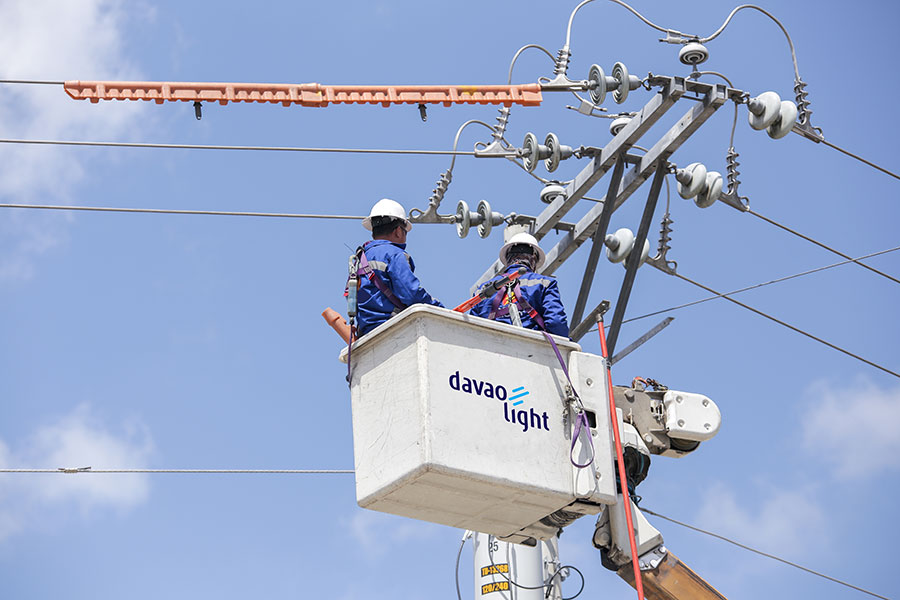From gas lamps to electric lights. Young student Mitch Balbuena used to do her homework using a gas lamp for illumination up until the sitio electrification program brought by Davao Light finally reached their home.
Students and business owners in Barangay Malabog, Davao City are able to progress as accessible electric power finally reaches their homes and establishments.
Mitch Balbuena, 14, dreams of being a teacher but initially found it hard to focus on her studies, relying on intermittent power from solar panels and, at nighttime, gas lamps.
Meanwhile, vegetable stall owner Bebina Lucena previously had no choice but to operate her store without electricity, depriving her of the benefits of refrigeration. This left her to shoulder the higher cost of making frequent three-hour trips just to buy blocks of ice from the distant marketplace.
While solar panels did find their way in Barangay Malabog in 2019, the technology was limited in supporting a continuous supply of electricity, weakening or even disappearing whenever it rained, was cloudy, or when it was already dark.
Greater electrification of the area was challenged by the peace and order situation, which was finally addressed in 2022 when the entire Davao Region was declared “insurgency-free”.
The improved situation prompted Davao Light and Power Company (Davao Light), a distribution utility of Aboitiz Power Corporation, to begin the sitio electrification program in Barangay Malabog in the same year, installing power lines and the other necessary infrastructure. Since then, out of the 82 sitios in Barangay Malabog, 70 have been energized.
“Pagdating ng kuryente dito, yung mga liblib na purok at sitio may mga tindahan na, may mga resort na, so malaking factor talaga yung kuryente kase yun ang kailangan ng tao,” said Malabog Barangay Captain Jessielito Areja. (When electricity arrived, the remote areas suddenly had stores, there were resorts, so electricity is really a big factor because that’s what people need).
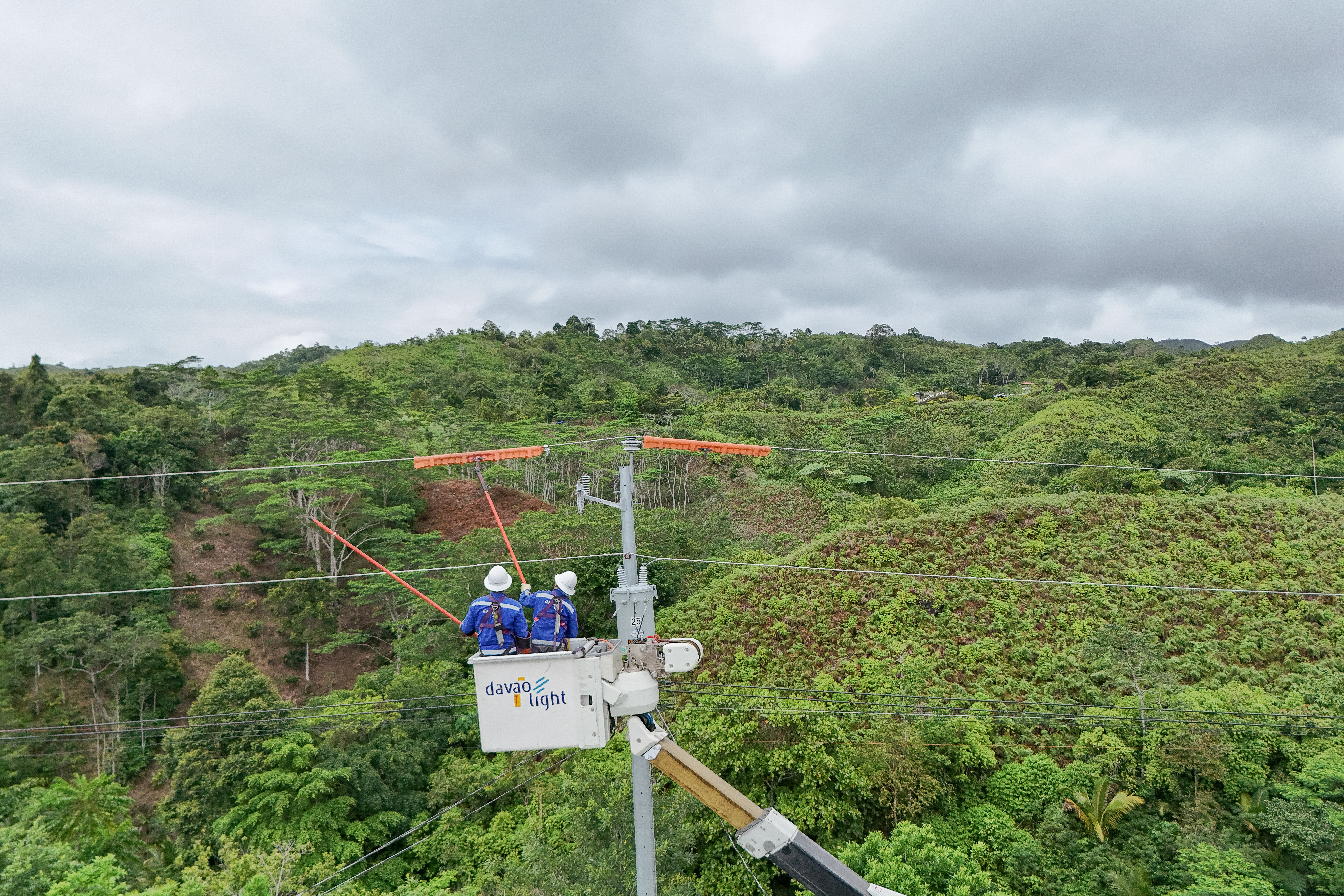
Sitio electrification. The improved peace and order situation in Davao City allowed Davao Light to erect and install power lines and other infrastructure to finally energize Barangay Malabog and other underserved areas.
With the objective of economic development and poverty reduction, the sitio electrification program is a project by the national government of the Philippines that aims to connect far-flung barangays and underserved rural areas to the electrical grid of distribution utilities such as Davao Light.
“The electrification program is one of the key priorities of the Department of Energy (DoE), not only in Mindanao but in the entire country,” explained DoE Mindanao Field Director Nilo J. Geroche, adding that the government targets full electrification of households by 2028.
But electrification, particularly at the household level, is a moving target, as pointed out by Davao Light President and Chief Operating Officer Enriczar T. Tia, considering how new residents move into the sitios every year.
“Right now, among the 182 barangays within the Davao Light franchise area, we’re proud to say that we are 100% electrified,” he said. At the sitio level, data from Davao Light showed that 66 still remain unenergized, making up 1.73% of all sitios in its service area. “At the household level, there are around 503,000 households where 2,000 are yet to be energized.”
Since electrification, business owner Bebina Lucena now has a refrigerator for storing her vegetables, enabling her to save more money and reinvest in her stall. She’s expanded the goods and items for sale, which now include cold drinks and even a wifi connection for P1.
“Nagpapasalamat ako sa Davao Light kase umunlad yung pamumuhay namin,” Bebina said, noting how her revitalized store helps in funding her children’s education. (I thank Davao Light because our lives have improved).
At the same time, with the hope and modernity brought about by electricity, Mitch can now hope for a much better life for herself and her family, saying that she wants to progress so that their house can be renovated.
“Gusto ko maging successful para kaya ko nang supportahan ang sarili ko… Hindi na ko aasa sa iba,” she said. (I want to be successful so that I can support myself… I won’t have to rely on anyone else).
Despite the remaining challenges in reaching far-flung and underserved households, including those in Barangay Malabog, Davao Light is undeterred.
“In Davao Light, it is our massive transformative purpose to empower the evolution of our cities, and we believe that the sitio electrification program is part of that mandate,” Tia said.
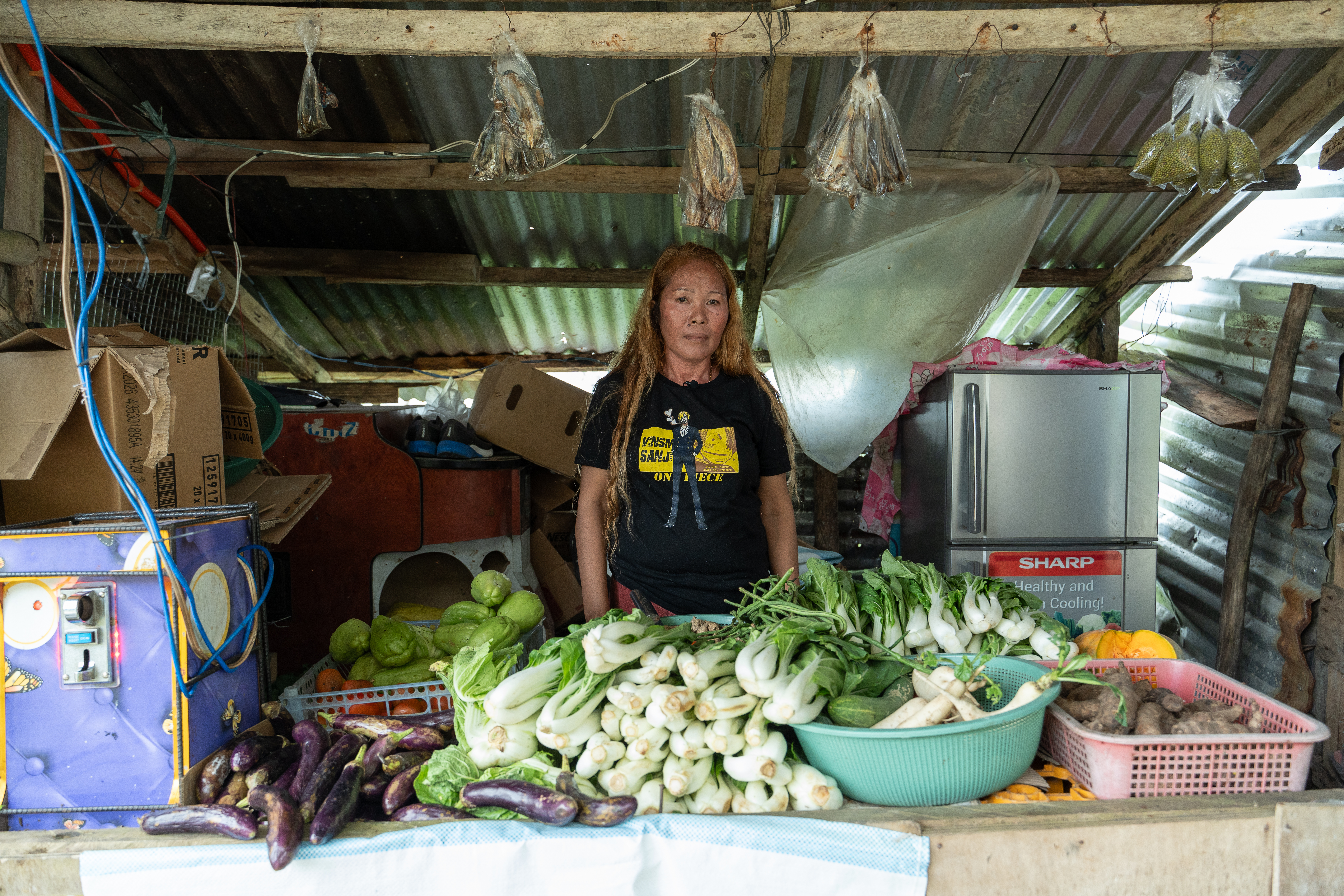
A revitalized store. Thanks to electricity, Bebina Lucena’s small store now accommodates a refrigerator for storage (right) and even a pay-per-use internet access service vending machine (left), which helps increase her earnings.
Underground cabling in Davao City
Alongside the sitio electrification program, Davao Light is working on underground cabling, or the transfer of overhead power lines to below ground level, in the city proper.
Underground cabling not only enhances the city’s skyline, but also makes the streets safer for motorists, commuters, and pedestrians, making it appealing to residents, tourists, and investors. Power pilferage, or electricity theft, is also prevented.
To the power distribution network, it also enhances its resilience and reliability, with lesser incidence of emergency power interruptions, as well as the mitigation of fire hazards, accidents, and safety risks, even amidst extreme weather conditions.
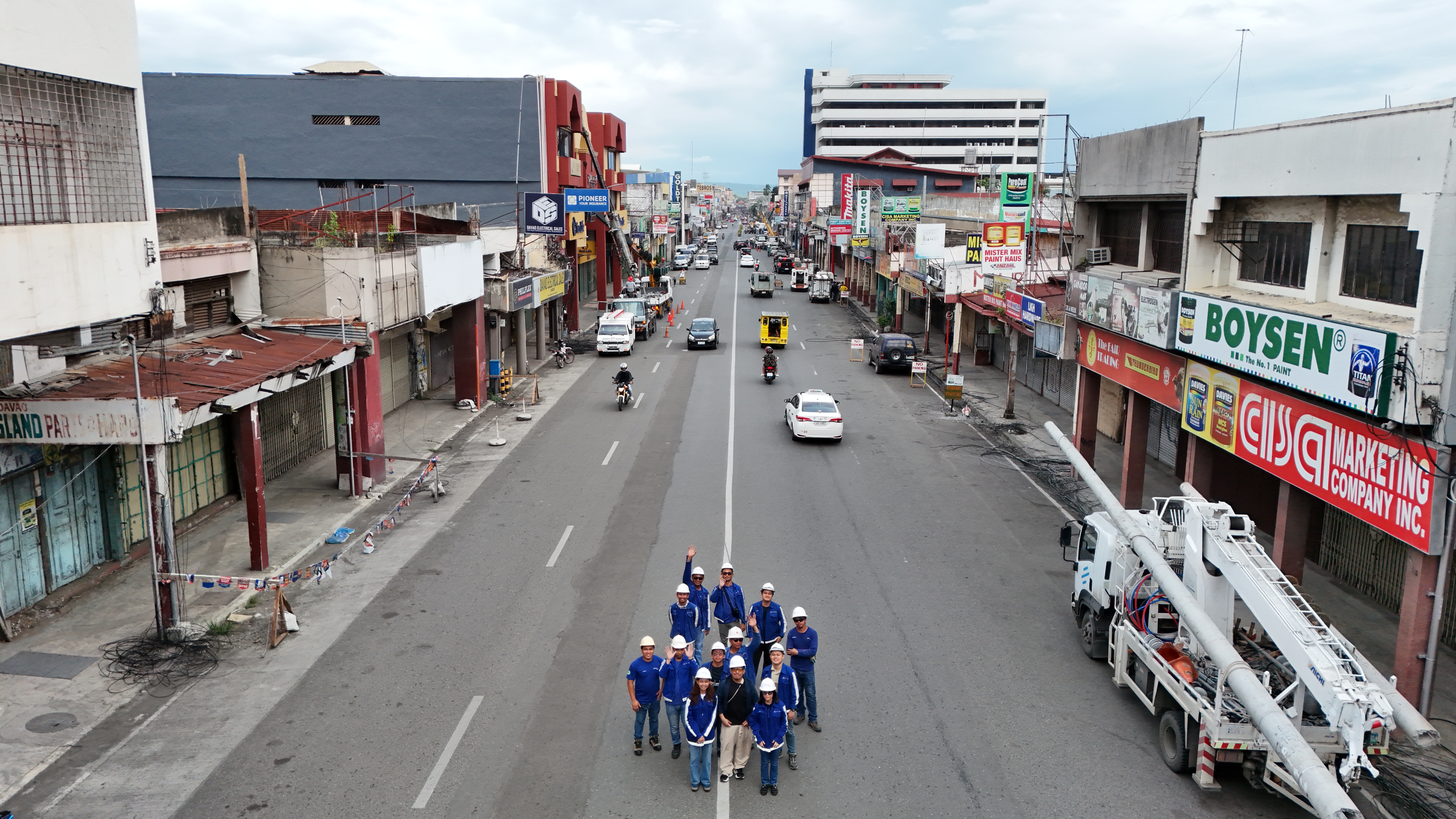
No wires, just clear skies. The project team of Davao Light show a completed portion of the underground cabling project in Ramon Magsaysay Avenue in Davao City.
“Other than the aesthetic aspect, the benefit of underground cabling is that it’s safer and provides for less interruption in power distribution since the power lines are protected and aren’t exposed,” said Davao Light Head of Reputation Enhancement Department Fermin Edillon.
“But it’s not that easy to implement because we are given a work permit only during the night — like 9pm up to 5am — and then you have to close the area during the day so that commuters can pass through,” Tia added, while also noting how the project is quite costly, making them focus their efforts on mandated areas.
The underground cabling project was mandated under Davao City Ordinance No. 0152-17, Series of 2017, “requiring all telecommunication companies, Davao Light and Power Company and all other persons to comply with the underground cabling plan of the City of Davao.”
The first phase covered C.M. Recto street from corner San Pedro street to corner Ramon Magsaysay Avenue, while the second phase comprised 0.6 kilometers of San Pedro street from City Hall Drive up to corner Quirino Avenue. The former began construction in 2018 and was finished in 2021, while the latter started in March 2021 and was completed in February 2023.
As of March 2025, the first part of phase three in Ramon Magsaysay Avenue, covering the Philippine Post Office up to the corner of Suazo street, was deemed complete. The second part of phase three has already commenced.
Davao Light is the Philippines’ third-largest electric distribution utility, currently serving the cities of Davao and Panabo, plus the municipalities of Carmen, Dujali, and Sto. Tomas.
